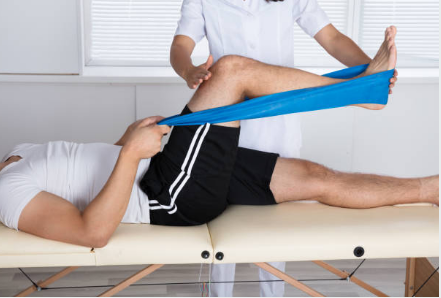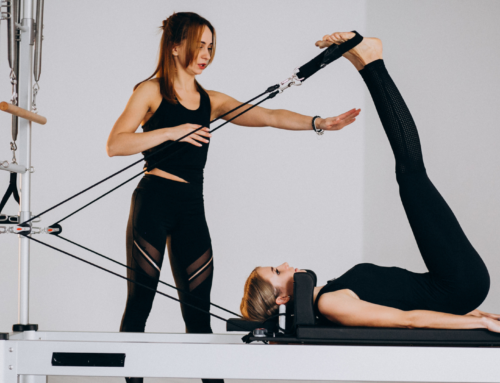Shin pain while running is a common complaint among both novice and experienced runners. This discomfort can significantly hinder performance and even lead to more serious injuries if not properly addressed. Understanding the causes, symptoms, and treatment options, particularly the role of physiotherapy, is crucial for effective management and recovery. In this blog post, we’ll explore the intricacies of shin pain while running and how physiotherapy can help alleviate this issue.
Causes of Shin Pain While Running
Shin pain while running, often referred to as shin splints, can be attributed to various factors. These include overuse injuries, biomechanical issues, and improper training techniques. Here are some common causes:
- Medial Tibial Stress Syndrome (MTSS):
- This is the most common cause of shin pain in runners. MTSS occurs due to inflammation of the muscles, tendons, and bone tissue around the tibia (shin bone).
- Overuse and repetitive stress, particularly on hard surfaces, lead to this condition.
- Stress Fractures:
- Tiny cracks in the shin bone, known as stress fractures, result from repetitive impact and insufficient recovery.
- Stress fractures are more severe than shin splints and require longer recovery times.
- Muscle Strain:
- Overworking the muscles around the shin can lead to strains, causing pain and discomfort.
- This often happens due to sudden increases in training intensity or improper warm-up routines.
- Biomechanical Issues:
- Poor running form, flat feet, or overpronation (excessive inward rolling of the foot) can place additional stress on the shin bones.
- Imbalances in muscle strength and flexibility also contribute to shin pain.
- Improper Footwear:
- Wearing worn-out or inappropriate running shoes can fail to provide adequate support and cushioning, leading to shin pain.
- Running on hard or uneven surfaces with inadequate footwear exacerbates this issue.
- Overtraining:
- Sudden increases in running distance, intensity, or frequency without adequate rest periods can overload the shin muscles and bones.
pain.
Symptoms of Shin Pain While Running

Recognizing the symptoms of shin pain while running is essential for early intervention and treatment. Common symptoms include:
- Pain:
- Pain along the inner edge of the shinbone, often starting as a dull ache and progressing to sharp pain with continued activity.
- Pain typically worsens during and after running and may persist even during rest.
- Tenderness:
- Tenderness and soreness when pressing on the affected area of the shin.
- Swelling:
- Mild swelling around the shinbone, indicating inflammation.
- Stiffness:
- Stiffness and discomfort in the lower leg, particularly in the morning or after prolonged periods of inactivity.
- Weakness:
- Weakness in the lower leg muscles, leading to difficulty in maintaining running form and performance.
Physiotherapy Treatment for Shin Pain While Running

Physiotherapy is a cornerstone in the treatment and rehabilitation of shin pain while running. A tailored physiotherapy program can address the root cause of pain, improve strength and flexibility, and prevent future injuries. Here’s how physiotherapy can help:
- Assessment and Diagnosis:
- A thorough assessment by a physiotherapist to determine the specific cause of shin pain.
- This includes a detailed medical history, physical examination, and possibly imaging studies to rule out stress fractures or other serious conditions.
- Pain Management:
- Techniques such as ice or heat application, ultrasound, and electrical stimulation to reduce pain and inflammation.
- Soft tissue mobilization and massage to relieve muscle tension and improve blood flow.
- Rest and Activity Modification:
- Advising a period of rest from running and other high-impact activities to allow the shin tissues to heal.
- Guiding patients on alternative low-impact activities like swimming or cycling to maintain fitness without exacerbating shin pain.
- Stretching and Flexibility Exercises:
- Gentle stretching exercises to improve flexibility in the calf muscles, Achilles tendon, and shin muscles.
- Stretching helps alleviate tightness and reduce the risk of future injuries.
- Strengthening Exercises:
- Targeted strengthening exercises for the lower leg muscles, including the calf muscles, tibialis anterior, and intrinsic foot muscles.
- Strengthening weak muscles to support the shin bone and improve overall stability.
- Improving Running Mechanics:
- Analysis of running form and gait to identify and correct any biomechanical issues.
- Recommendations for proper footwear and running techniques to reduce stress on the shins.
- Balance and Proprioception Training:
- Exercises to improve balance and proprioception (awareness of body position) to enhance overall stability.
- Functional training to simulate running movements and ensure a safe return to running.
- Gradual Return to Running:
- Developing a gradual return-to-running program to ensure safe and effective recovery.
- Monitoring progress and making necessary adjustments to the rehabilitation plan.
Preventing Shin Pain While Running

Prevention is always better than cure. Here are some tips to prevent shin pain while running:
- Proper Warm-Up and Cool-Down:
- Always warm up before running and cool down afterward with gentle stretching and mobility exercises.
- Appropriate Footwear:
- Invest in high-quality running shoes that provide adequate support and cushioning. Replace worn-out shoes regularly.
- Gradual Progression:
- Gradually increase running distance, intensity, and frequency to allow the body to adapt and recover.
- Strength and Flexibility Training:
- Incorporate strength and flexibility exercises into your routine to support the lower leg muscles and joints.
- Cross-Training:
- Include low-impact activities like swimming or cycling in your training program to reduce the risk of overuse injuries.
- Running Surface:
- Avoid running on hard or uneven surfaces. Opt for softer surfaces like grass or trails whenever possible.
- Listen to Your Body:
- Pay attention to any signs of pain or discomfort and take appropriate rest periods to prevent injuries.
Conclusion
Shin pain while running can be a significant setback for runners, but understanding the causes, symptoms, and treatment options can help manage and prevent this issue. Physiotherapy plays a crucial role in the effective treatment of shin pain, offering a comprehensive approach to pain management, strength building, and injury prevention. By addressing the root cause of shin pain, improving running mechanics, and providing targeted rehabilitation exercises, physiotherapy ensures a safe and successful return to running.
If you experience shin pain while running, seek prompt medical advice and consult a physiotherapist to develop a personalized treatment plan. With the right care and rehabilitation, you can overcome shin pain and continue to enjoy the many benefits of running.






